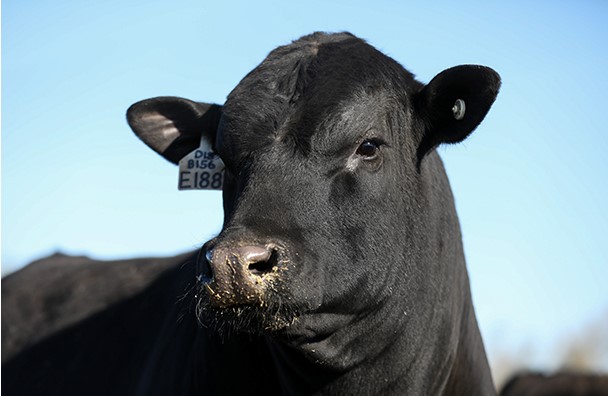Tue, 25 Oct 2022 08:13:16 CDT

Should I Cull My Bulls? (Is It Time to Seize Financial and Genetic Opportunity?)
Mark Johnson, Oklahoma State University Extension Beef Cattle Breeding Specialist, offers herd health advice as part of the weekly series known as the "Cow Calf Corner" published electronically by Dr. Peel, Mark Johnson, and Paul Beck. Today, Johnson is talking about assessing your bull herd to make culling decisions.
Bulls are like professional athletes. Once properly developed they reach full servicing capacity and have a prime of several breeding seasons (between the ages of 2 to 5) and after the age of 6, they are on borrowed time. For each Tom Brady, winning Super Bowl Championships past the age of 40, there are hundreds of the likes of Joe Namath, who peaked early winning a Super Bowl at 26 before knee injuries cut his career short and left him ineffective before the age of 30. Bottomline: the life of a herd bull is full of perils. Mounting and breeding cows in all sorts of terrain, working on mud, sand, rocks, snow, potentially fighting with other herd bulls and the natural service of each female could lead to injury of feet, legs and sex organs. Over time, even the soundest and most athletic are going get injured, become more cantankerous and unsafe to have around, or potentially fail a Breeding Soundness Exam (BSE).
Consider:
– If you have a spring calving cow herd, your bull or bulls are currently “off-duty” for the next 6-8 months. If your bull weighs 2,000 pounds and will eat 2% of his body weight in forage dry matter hay each day that is a daily intake of 40 pounds. Over the next 200 days while your bull is “off duty” he will consume about 4 ton, or 8000 pounds of forage dry matter. If his nutritional requirements will be met with hay valued at $200/ton that is $800 in feed cost between now and turn-out next spring.
– Salvage value of the bull. The USDA Market Report this week indicates a salvage value of approximately $1.00 per pound or roughly $2,000 for a 2,000 pound bull.
– As a result of successful selection programs in the purebred sector, younger bulls purchased as yearlings next spring will have the genetic advantage. The table of Genetic Trend shows the average EPDs by year of birth for Angus cattle. The improvement in genetic potential for calving ease, growth, milk, marbling and muscle is evident over time and indicative of the genetic trend in all beef breeds.
Assess the ages of your herd bulls and current feed costs. Culling older herd bulls now and re-populating with young bulls next spring can add long-term genetic advantages beyond just the savings in winter feed bills. The salvage value plus the savings in feed cost should cover a sizable portion of investing in younger, genetically superior bulls next spring.
References:
Angus Sire Summary. Fall 2022
USDA Oklahoma Weekly Cattle Auction Summary AMS Livestock, Poultry & Grain Market News, Oklahoma Dept. of Ag Mrkt News. Friday, October 14, 2022

















